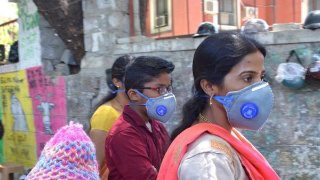Indian textile & apparel industry during pandemic
Aug 13, 2020 | by Zhao xh

Challenges facing the Indian textile and apparel sector as the country braces up to face the impact of the COVID-19 pandemic.
To slow the spread of the virus, lockdown seemed to be the only viable option. India also announced a nationwide lockdown in late March. The brunt of this lockdown was born by migrant workers, who in no time saw their dreams and livelihood shattered as factories stood idle. With no work in hand, migrant workers started moving back to their native places and the country witnessed a mass exodus of workers from cities and industrial hubs unseen in post-partition era.
The sector severely hit by the pandemic-induced lockdown is the textile and apparel. It contributes 13% to India’s total exports, 7% to the industrial output in value terms, 2% to India’s gross domestic product (GDP), 15% to export earnings and offers employment to around 60 million directly or indirectly.
The industry was estimated to be worth USD 100 billion in January 2020 and includes a wide range of players, including manufacturers, retailers, wholesalers and exporters of cotton textiles, handloom and woollen textiles. It also includes those engaged in the manufacturing of capital goods, such as textile machinery and equipment, dyes and raw materials, finished textiles, fabrics and garments. Exports in the sector from India were projected to reach USD 82 billion in fiscal 2020 - 2021 from USD 39 billion in the last fiscal.
Most of employment in the textile and clothing industry is in the informal sector, which generally pays much lesser wages than the formal sector. While the pandemic has affected both formal and informal sectors, the impact will be more disastrous for workers in the latter. This sector is characterised by the lack of social security provisions, paid leaves, healthcare provisions and other safety measures, and therefore, workers are more vulnerable. In the formal sector, the rise in contractual workforce, a post-liberalisation phenomenon, has helped employers in retrenching workers with ease during the pandemic. This has led to a mass exodus of workers from cities back to their villages.
The Clothing Manufacturers Association of India (CMAI) had projected in April that there could be a job loss of a crore in the textile sector due to the lockdown. The losses in the textile industry in Punjab has been reportedly pegged at around 2,000 crore so far.
Structural changes resulting from pandemic
The virus has shown us that the global supply chain is highly fragile and fundamentally susceptible to disruptions. The weaker links in the supply chain can pose a great threat to the entire ecosystem on which the textile business sustains itself. The industry across its supply chain needs reorientation and restructuring towards a more sustainable and resistant web.
A Forbes article argued that prior to the pandemic, all talk related to fast fashion focused on sustainability and companies were rethinking their business models for 2030 and beyond. But the pandemic has reduced that timeline, it said. Robert Antoshak, a textile consultant, in his blog argues: “The pre-virus apparel industry was not sustainable. It was only a matter of time before the ailments in the sector caused the industry to either falter or, worse, collapse. It doesn’t matter: COVID-19 has elected the latter.”
The virus will end sooner or later. The post-pandemic world will altogether be different. Most industries will see a sharp rise in demand, but it will not be so for the textile industry. Its nature and the customer-product relationship are such that it makes it more susceptible to a post-pandemic recession. Global consulting firm McKinsey feels once the dust settles on the immediate crisis, the fashion industry will face a recessionary market and industrial landscape will undergo a rapid structural transformation. It further argues that the industry will see a period of recovery characterised by a lull in spending and slack in demand across channels.
The pandemic has not only affected the demand for textile and apparel but also its supply. India is one of the major textiles and apparel exporters (around 60% of the country’s exports) to the United States and the European Union (EU) and these markets are hit hard by the virus. Buyers from these markets have either cancelled orders or put them on hold because consumers are locked inside, shopping malls are closed and access to online marketing is restricted.
A report by Wazir Advisors titled Impact of COVID-19 Scenario on European and U.S. Apparel Market estimated that combined U.S. and EU apparel consumption might fall by about USD 308 billion, around 45% lower than projected in 2020.
The spread of the virus has majorly impacted the textile industry as China, the United States and the EU are huge markets for Indian textile products, according to T Rajkumar, chairman of the Confederation of Indian Textile Industry (CITI). The cascading effect of external demand shock along with domestic demand slack resulted in lower production. Many firms were shut down and production fell drastically.
Retail prices now will see a jump because sanitisation and social distancing measures are going to add to the costs. This will make deficient demand a perennial phenomenon for the industry. The virus has shattered the supply chain at each level.
Source: fibre2fashion.com








